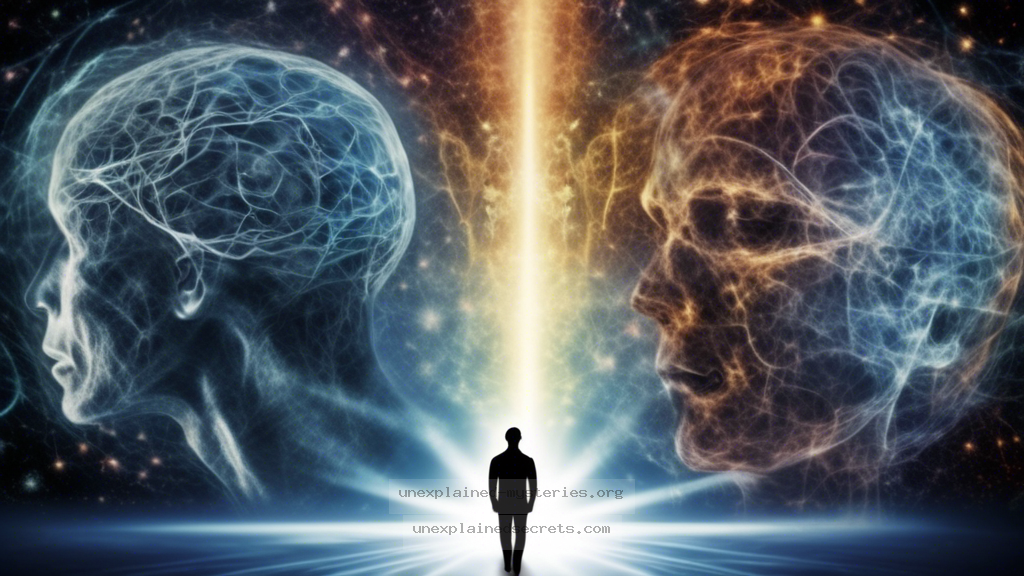What Happens to Consciousness During Near-Death Experiences?
What Happens to Consciousness During Near-Death Experiences?
The phenomenon of Near-Death Experiences (NDEs) has captivated the minds of scientists, theologians, and the general public alike for decades. The question of what happens to consciousness during these experiences is not just a matter of academic curiosity; it touches on profound issues regarding the nature of existence, the soul, and what may lie beyond this life. This blog post will delve into the unexplained mystery of consciousness during NDEs, exploring remarkable cases, scientific research, and the implications of these findings for our understanding of life and death.
Historical Context of Near-Death Experiences
The concept of NDEs is not new. Accounts of experiences resembling modern descriptions of NDEs can be found throughout history, in various cultures and religious texts. For instance, the Tibetan Book of the Dead describes a “bardo” state where consciousness transitions from life to the afterlife. Similarly, in ancient Egyptian writings, the soul’s journey is depicted after death, illustrating a long-standing fascination with what occurs when life ends.
In the modern era, the term “Near-Death Experience” was popularized by Dr. Raymond Moody in his 1975 book, “Life After Life.” Moody compiled over 100 accounts of individuals who had come close to death, highlighting common elements such as out-of-body experiences, feelings of peace, and encounters with deceased loved ones. These accounts sparked a wave of interest and laid the groundwork for further research into the nature of consciousness during NDEs.
Core Concepts and Theories Surrounding NDEs
Understanding NDEs requires us to examine several core concepts, including consciousness, the brain’s function during trauma, and the subjective nature of experience. At the heart of the NDE phenomenon is the question of whether consciousness persists after clinical death. Various theories have emerged to explain this phenomenon:
- Biological Theories: Some researchers suggest that NDEs are the result of neurological processes. For example, the brain may release endorphins during trauma, creating feelings of euphoria and detachment.
- Psychological Theories: NDEs might be a form of psychological defense mechanism, allowing individuals to cope with the impending death.
- Spiritual Theories: Many people interpret NDEs as evidence of an afterlife, supporting the idea that consciousness exists independently of the physical body.
Notable Cases: Real-World Accounts of NDEs
Numerous documented cases provide compelling evidence of NDEs and their impact on individuals. One of the most notable accounts is that of Dr. Eben Alexander, a neurosurgeon who experienced a profound NDE during a coma caused by bacterial meningitis. Alexander described traveling through an expansive, vibrant universe, meeting spiritual beings, and feeling an overwhelming sense of love and acceptance. His journey challenged his previous beliefs about consciousness and the brain’s role in shaping our experiences.
Another fascinating case is that of Pam Reynolds, who underwent a rare surgical procedure in which her body temperature was lowered, and her blood was drained, effectively putting her into a state of clinical death. Pam reported a vivid NDE, including an out-of-body experience where she could accurately describe events and conversations occurring in the operating room, despite being declared clinically dead at the time. These types of accounts raise significant questions about the nature of consciousness and its potential survival after death.
Scientific Research into NDEs
The scientific community has made strides in understanding NDEs, though the subject remains controversial. Studies conducted by researchers like Dr. Sam Parnia focus on the physiological correlates of NDEs and how they relate to brain activity during clinical death. Parnia’s research has examined patients who have undergone cardiac arrest, revealing instances where individuals reported awareness of their surroundings despite being unresponsive clinically.
Moreover, the AWARE study, launched in 2008, aims to gather comprehensive data on NDEs by placing visual targets in hospital rooms that can only be seen from above. This research seeks to establish whether consciousness can exist independently of the body during life-threatening events and has the potential to provide groundbreaking insights.
Alternative Perspectives on NDEs
While many view NDEs as compelling evidence of an afterlife, others approach these experiences from a more skeptical standpoint. Critics argue that NDEs can be explained through physiological and psychological mechanisms. They highlight that the brain is still functioning, albeit in a limited capacity, during traumatic events. This perspective suggests that the vivid experiences reported could be mere hallucinations or the brain’s attempt to make sense of impending death.
Furthermore, some researchers advocate for a more nuanced understanding of consciousness, suggesting that it may not be as binary as “alive” or “dead.” This perspective opens doors to discussions about consciousness existing on a continuum rather than as a fixed state.
Common Misconceptions About NDEs
Several misconceptions about NDEs can cloud the understanding of this phenomenon. Here are a few key points to clarify:
Clarification: While many individuals report joyful experiences, others describe distressing or frightening NDEs, often referred to as “negative NDEs.” These experiences can vary widely, influenced by personal beliefs, cultural backgrounds, and psychological states.
Clarification: While many interpret NDEs as evidence of an afterlife, skeptics argue they can be explained through scientific phenomena. The interpretation of NDEs often reflects individual beliefs and cultural contexts.
Practical Implications for Investigation and Study
Investigating NDEs requires a multidisciplinary approach, combining insights from psychology, neuroscience, and spirituality. Here are some practical steps for those interested in studying NDEs:
- Conducting Interviews: Collect detailed accounts from individuals who have experienced NDEs, focusing on the specifics of their experiences and any lasting effects.
- Collaboration with Medical Professionals: Work alongside healthcare providers to understand the physiological aspects of NDEs and explore potential correlations with clinical data.
- Engaging in Open Dialogue: Foster discussions among scientists, theologians, and laypeople to bridge the gap between empirical research and spiritual inquiry.
Future Developments and Ongoing Research into NDEs
The study of NDEs is evolving, with ongoing research promising to shed light on this profound mystery. As technology advances, researchers are exploring brain imaging techniques to understand consciousness during near-death situations better. Additionally, interdisciplinary studies are gaining traction, recognizing the value of integrating scientific inquiry with philosophical and spiritual perspectives.
Moreover, the growing acceptance of NDEs in both scientific and religious communities indicates that this field may become a focal point for future exploration. As more individuals share their experiences, researchers will have a richer dataset to analyze, potentially leading to groundbreaking revelations about consciousness and existence beyond the physical realm.
Conclusion: The Enigma of Consciousness and NDEs
The question of what happens to consciousness during Near-Death Experiences remains one of the most intriguing mysteries of our time. While significant progress has been made in understanding the phenomenon, the interplay between physiological, psychological, and spiritual elements continues to challenge our perceptions of life and death. The documented cases, scientific studies, and diverse perspectives highlight the complexity of consciousness and its potential existence beyond the physical body.
As we continue to explore this enigmatic frontier, the journey into understanding NDEs not only reveals insights about the human experience but also invites us to contemplate the nature of consciousness itself. Whether viewed through the lens of science or spirituality, the exploration of NDEs serves as a reminder of the profound questions we face regarding our existence and what may lie beyond.
Other Articles
Recent Posts
- What Happened to Flight MH370? The Conspiracy Theories That Still Haunt Us
- What Secrets Lurk Within the Walls of the Infamous Trans-Allegheny Lunatic Asylum?
- What Evidence Supports the Existence of Bigfoot in the Pacific Northwest?
- What Happened to the Indus Valley Civilization? Unraveling the Mysteries of Ancient Urban Life
- Can Telepathy Be Scientifically Proven Through Laboratory Evidence?







